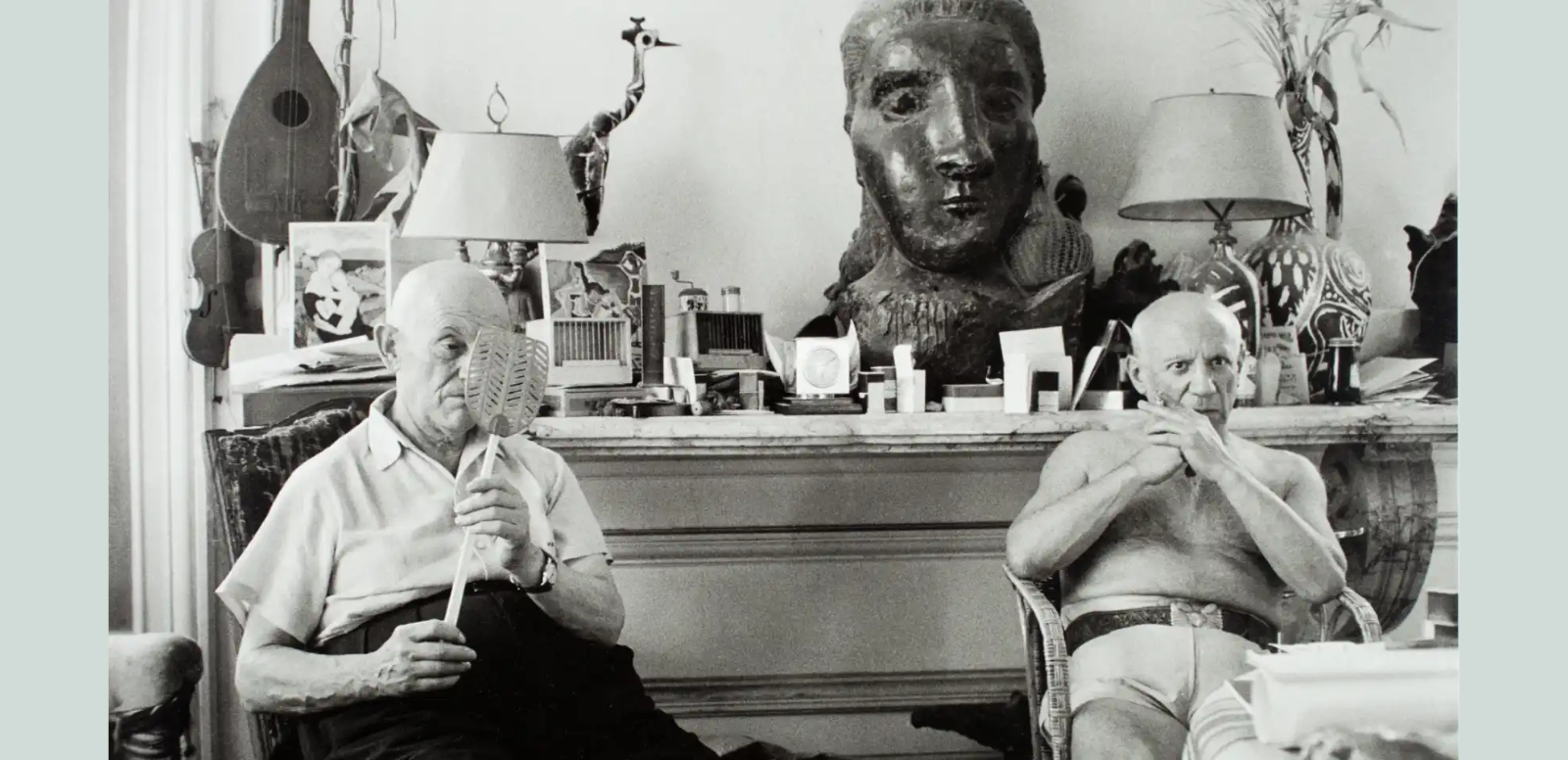
© Sucesión Picasso, VEGAP, Madrid, 2023
The Road to Cubism, Der Weg zum Kubismus (1919), is one of the books written by Daniel-Henry Kahnweiler (1884-1979), who was one of the leading dealers of Cubism, and of Pablo Picasso throughout most of his career. His other writings include the catalogue Picasso's Sculptures (1948), his memoirs My Galleries and My Painters (1961) and Aesthetic Confessions (1963). In his literary work, the art dealer shows his double work as a witness and creator of a new model of working with artists.
The Road to Cubism (1919) is a foundational text in which Daniel Kahnweiler sets down in writing the first aesthetic values and structures of Cubism. He wrote it during his years of exile in Switzerland during the war. In this work he "defended this new artistic current as the paradigmatic manifestation of its time, as it responded to new iconographic and representational needs in modern, pre-war times". (Museo Nacional de Arte Reina Sofia, n.d.)
In the history of 20th century art, the figure of Daniel-Henry Kahnweiler is a legend. He is a "man of the arts" who stands out in all his facets as a dealer, publisher and writer, as the exhibition Daniel-Henry Kahnweiler. Dealer and Publisher (2/12/2022-19/3/2023) at the Museu Picasso in Barcelona. Throughout his life, this man was in contact with some of the most representative artists of his time and their works, composed entire collections and influenced tastes and spirits both nationally and internationally.
He was the first promoter of Cubism, starting his activity in 1908, when he opened his gallery in Paris and began to represent artists such as Georges Braque, Pablo Picasso, Juan Gris and Fernand Léger. He always remained faithful to his morals and ethics despite the historical moment he lived through and the consequences of his Jewishness: in 1914 his collection was taken away from him and in 1940 all his possessions. But, in spite of everything, he remained a protector and collector of his artists.
He had a special relationship with Pablo Picasso, whom he considered "the shock of his life". The two met in Paris at a young age, Kahnweiler (23) and Picasso (26), and had a fruitful relationship that would last throughout their lives. A relationship based on necessity and fuelled by the curiosity that arose in both: a young artist looking for an art dealer to represent him and an art dealer looking for a bold artist.
In addition to the theoretical foundation he brought to the movement, he was an extraordinary gallery owner, in many ways a pioneer of contemporary practice. This is reflected in one of the artist's statements: "What would have become of us if Kahnweiler had not had that business sense? In Picasso's work we can find the admiration the artist felt for his art dealer and friend in works such as Portrait of Daniel-Henry Kanhweiler (1910) or the series of 3 portraits he made in lithograph of his friend on 3 June 1957: Portrait of D. H. H. Kahnweiler I (1957), Portrait of D. H. Kahnweiler II (1957) and Portrait of D. H. Kahnweiler III (1957).
References:
- Picasso Museum, Barcelona (2022). Exhibition: Daniel Henry Kahnweiler. Merchant and publisher. 02.12.2022 - 19.03.2023. Available at: http://www.bcn.cat/museupicasso/es/exposiciones/daniel-henry-kahnweiler.html
- Museo Nacional Centro de Arte Reina Sofía (n.d.). Daniel Henry Kahnweiler. Available at: https://guernica.museoreinasofia.es/agente/daniel-henry-kahnweiler-5272
Works:
- Picasso, Pablo (1910). Portrait of Daniel-Henry Kahnweiler. Oil on canvas, 100.4 × 72.4 cm. Art Institute of Chicago.
- Picasso, Pablo (3 June 1957). Portrait of D. H. Kahnweiler. I. Lithograph (Sabartés proof) Museu Picasso, Barcelona.
- Picasso, Pablo (3 June 1957). Portrait of D. H. Kahnweiler. II, 3 June 1957. Lithograph (Sabartés proof) Museu Picasso, Barcelona.
- Picasso, Pablo (3 June 1957, Portrait of D. H. Kahnweiler. III, 3 June 1957. Lithograph (Sabartés proof) Museu Picasso, Barcelona.

